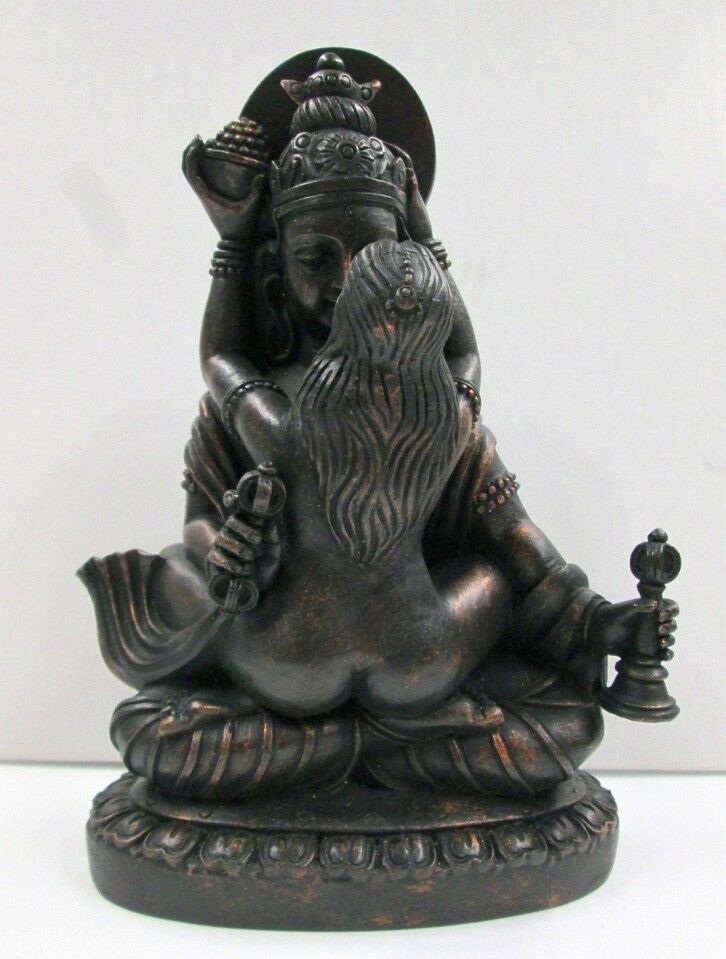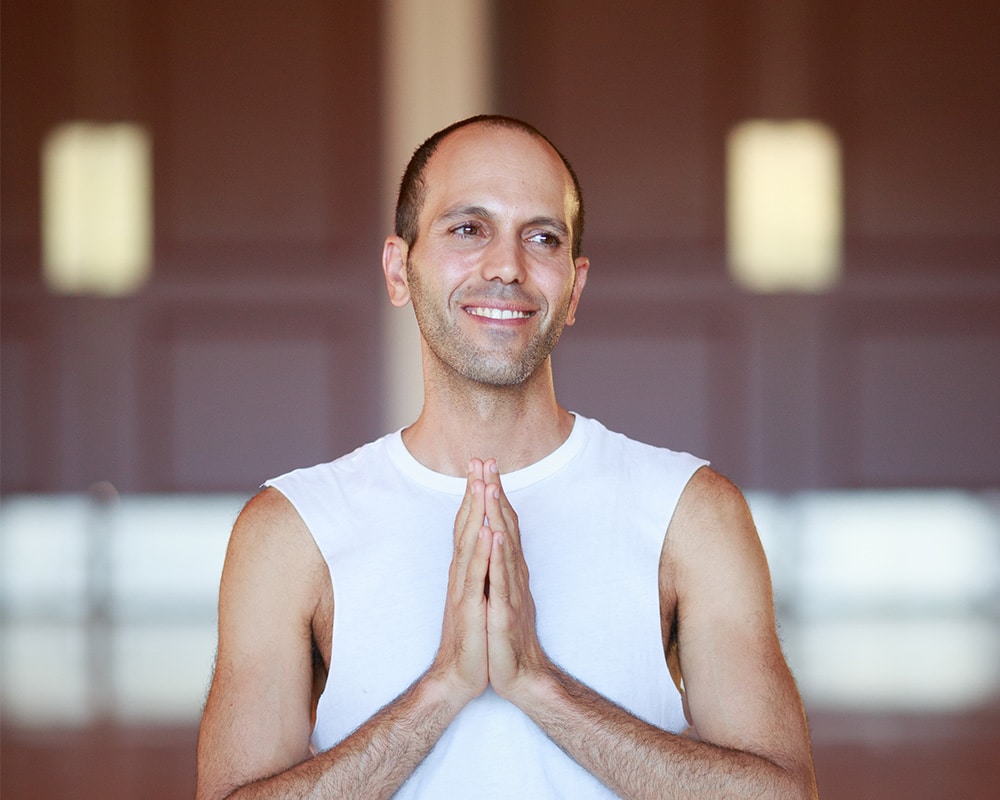Even those of us who have been practicing for a while can attest that meditating can be very challenging. Whether we notice it or not, when most of us try to meditate, we come up against our tendency to escape and dissociate. Sometimes we spend the entire time lost in thought. Other times we struggle with our physical discomforts. Whether we end up checking out by getting sleepy, or by getting agitated or indulging in fantasies, our normal reaction is to run away from the simple experience of being in the present moment.
In a way, the first challenge is to even notice that this is what is happening. Just being able to think: “hey, I just checked out” can be a powerful tool to help us move closer to ourselves and to reality. But then, what do we do when we notice that we have left the present moment, having sailed away on the wings of imagination, or sunk into dullness? We need to come to our senses.
Unlike our thoughts and fantasies, our senses only know the present moment. We can’t hear the future or taste the past. Whichever of our senses we choose to observe, it proves a doorway to the present moment, a pointer towards what is happening right now. This may seem terribly simple, but the fact is that most of us have been training in the opposite direction our entire lives – to distract, soothe, entertain and medicate ourselves out of the present moment. This is understandable, since the experience of the present moment is often uncomfortable – the body hurts, unpleasant sounds and smells abound, and painful emotions frequently grip us tightly. Yet, as long as we cheat ourselves out of the present moment, our fulfillment will always be temporary, and lasting satisfaction will evade us.
If we want to have a real chance at peace, it appears that our path there must go through the direct experience of our pain.
The good news is that this is not only normal, but also useful. The experience of our pain, if we stay with it through all of our resistance, might be the only thing that can finally awaken our essential love for ourselves. This love has nothing to do with our accomplishments or talents, nor even with our character or our intellect; it is our natural cherishing of life itself, as manifested in our experience. This kind of love naturally extends to others as well, since the purest experience of reality as such holds no separation between self and other. All that arises, arises within the same experience, just as all the various people and places in a dream prove upon awakening to have the same origin in the mind. The more directly we relate to life itself, the closer we move to love and compassion, both towards ourselves and towards others. Thus leaning into our experience of the present moment and doing our best to relax with whatever arises, no matter how uncomfortable, might be the kindest thing we can do.
So where do we start? Since our senses are always connected to the present moment, we can always start there. Any of the senses will do, but each of us may have different senses to which we relate more easily.
SEEING
Some of us will find it very difficult to look at anything without naming it, which will often initiate a sequence of thoughts that eventually carries us far away from our direct experience; so we might legitimately choose to close our eyes when we meditate. Yet, if we can soften our focus, allowing the apparently individual objects in our environment to melt into one image, whether it temporarily appears to be still or clearly evolving, we may be able to connect with the experience of sight in a new way. Instead of reaching outside of ourselves to grasp separate objects with our mind, we might find that we can simply allow light, color and texture to flow into us through the eyes and nourish us with the satisfaction of connection with the present moment. The yogis called this way of seeing drishti, and it can connect us simultaneously with ourselves and with our environment. Such an open, wide view can dissolve the illusory separation between self and others, between the body and the world “beyond” it. If we come to our sense of sight with this wide open view, it may connect us to the experience of a wide open heart.
One way to try this can be to sit in a completely dark space and light a candle on the ground a little bit in front of you. Relax your gaze softly onto the flame of the candle, and allow the gently fluctuating image to feel as though it is coming to you, instead of your vision reaching for it. Imagine drinking in the light of the flame with your eyes to your heart and through your whole body and mind. Now, let your consciousness trace the contour of the flame. Instead of tracing the contour with your eyes, soften and widen your gaze to include the entire flame and its surroundings, and let consciousness itself experience the soft and flexible boundaries between the flame and the space around it. The very boundaries between consciousness and the object it appears to take in the flame may begin to blur. With time, it might even feel as though consciousness begins to vibrate at the frequency of the flame’s colors.
You can also practice this exercise with any object of sight, and even with entire landscapes. Perhaps most powerfully, you can practice it with the eyes of another person, allowing the sight of the other pour into you through the eyes by relaxing and expanding the gaze to include both eyes, the entire face and the space around it. This can do more than soften the sense of separation between self and other – it can give the other a profound experience of being deeply seen and loved.
Lastly, whenever you find yourself lost in thought or struggling with resistance to your experience during everyday life, you can widen your gaze to include everything that you can see, and think to yourself: “now, this image.” Remind yourself that it is always now, and only the images change. Like scenes in a dream, all images are essentially neutral, and only the mind can make them good or bad. Now, this image. So be it.
HEARING
Another effective way to wake up to the present moment comes from leaning into deep listening. Allowing our focus to soften even more widely than the eyes, towards the ears, can relax the brain and the mind, bringing ease to the body and to the experience of consciousness. As with the practice of sight, instead of listening for individual sounds, we can listen to the way that all sounds arise from silence and fade back into silence. Even sounds that appear to be constant are actually continually arising and fading, replaced instantly by the next wave of sound. Here too the temptation to name the origins of sounds may be seductive, but time and practice can soften this habit. At first, the most obvious, loud or nearby sounds will dominate our experience – the sounds of traffic and machinery, of people and other animals. Yet, as we relax more deeply into listening, we might find quite quickly that our awareness expands to include subtler sounds – the buzz of electricity, the breath, the wind, our heartbeats. For the purpose of deep listening meditation, the fact of any sound being pleasant or unpleasant is irrelevant. Instead of strengthening our habits of judgment, we can gradually relax our preferences and soften into an experience of openness that can increasingly translate into the way we relate with everything and everyone.
Try sitting quietly, shutting your eyes and just listening. Notice if preference and resistance arise at any point – do you instinctively recoil or tense up from sounds that you judge as unpleasant? See if you can relax all preferences and just be with whatever arises. Notice what sounds are most obvious, and simultaneously also try listening to the silence behind each sound. Gradually open up to increasingly distant sounds, and let it expand your sense of self and of your location, your feeling of being limited to the boundaries of your skin. See if you can feel how every sound is touching you, bringing into question the very notion of distance and separation. You may find that both your sense of self and the origins of all sounds arise within the same, boundless consciousness. This, in turn, can help you relax the intensity of self-grasping, the illusion of identification with self, in contrast to “the world” or “others”, that the Buddha taught lies at the root of suffering.
The ancient yogis taught that meditation practice leads to the unveiling of siddhis, “magic” powers that are actually essential qualities of consciousness, unleashed when the illusion of identification with self softens and gradually disappears (cf. “there is no spoon” in The Matrix). One of these powers is the ability to be in multiple places at one time. The practice of listening widely and expanding our sense of location gives us a taste of this natural power, expanding the perception of our existence beyond the limits of the flesh. A more immediate result of this practice is deep and easeful relaxation, as settling back into the sense of hearing can quickly dissolve stress and anxiety, and connect us with the inherent peace of the present moment.
Another wonderful listening practice involves listening to the sound of a meditation bowl being struck slowly and repeatedly. As we listen to the expanding circles of sound waves, we may notice that they expand outwards in all directions like ripples in a pond (but in three dimensions, rather than just on the relatively flat surface of the water). As the sound continues to travel outwards to infinity, it slowly fades but never stops. If we allow our awareness to travel outwards with the sounds, we can gradually melt into an experience of infinity as our essential being.
Also with the sound of a meditation bowl being struck, try listening to the sound with different parts of your body. Since, scientifically speaking, sounds are waves of air that strike the body, the experience of sound really does not begin and end in the ears. Try listening to the sound of the bowl with your knee cap, your lower back, your heart. Try listening with your entire body. As your awareness becomes more clear and sharp, you may notice your body vibrating at the frequencies of sound. Your whole being may eventually feel itself resonating with the sound, and with the entire environment. The false sense of self gradually drops away, replaced by an increasingly clear experience of oneness.
When listening to another person talk, try imagining that you don’t understand the language that they are speaking. Listen instead to the flow of sounds rising out of and falling back into silence. Listen to the consonants and the vowels, the changing tones and emphases. You may find that you understand what the other person attempts to communicate more clearly than when trying to listen to meaning. You might event find that by listening in this way, you come to understand others better than they understand themselves.
SMELLING
As with all the other senses, we experience smell only in the present moment. The sense of smell is strongly linked with memory function in the brain, but all of our experiences occur now, including the vibrant feelings, emotions and images that make up our memories. Ayurveda associates the sense of smell with prithvi, the earth element, which is the most concrete and solid of the five elements. Indeed, when we smell something, actual massive particles enter our nostrils – unlike the massless photons of light, or the subtle airwaves of sound. The nostrils are also the only place in the human body where we find nerve endings uncovered by skin, resulting in a more immediate and sensitive relationship with our environment.
If you have a chance to sit in an aromatic flower garden, or simply have a particularly sweet smelling flower in front of you during meditation, focus on your sense of smell even as you notice the associated arising of images and sensations. As with seeing and hearing, the experience of smelling can liberate us from our limited ways of identifying with the self, and connect us more fully to our environment and to reality itself. Consider that, if massive particles from a rose are touching the exposed nerve endings inside your nostrils, where does the rose end, and where do you begin? Of all the senses, our sense of smell is most closely linked with the breath; as you practice smelling meditation, what happens to your breath? As the breath continuously travels between the flowers and the nostrils, whose breath is it, anyway? Increasingly allow the experience of smelling to dissolve your sense of separation and melt your awareness into the endless web of experience in consciousness.
Sitting closely across from and meditating with a partner can be a powerful experience regardless of what we choose as our conscious focus, but centering our meditation on our sense of smell can yield particularly wondrous results. Close your eyes and try to have both of you sit perfectly still and quiet without touching, and simply deepen your breath. Can you smell your partner’s presence? What sensations and images arise in response? Try aligning your inhalations with your partner’s exhalations; as we share breath with each other, our illusory sense of otherness and separation can increasingly dissolve into a sense of oneness.
Again, for the purpose of coming to our senses in meditation, our judgments of pleasant and unpleasant are irrelevant and even unhelpful. In every day life, we can notice our aversion to certain smells and become increasingly conscious of the repetitive thought patterns that habitually follow the experience of smelling. As we practice replacing aversion with curiosity in our response to the incoming data from our sense of smell, our equanimity can grow to eventually include all kinds of experience, and help us choose compassion over judgment in more of our interactions and relationships.
TASTING
Notably, smelling only takes place when we inhale. What happens when we exhale? During exhalation in the flower meditation, can you taste your environment? Can you taste your meditation partner’s presence as you breathe out? Certain fish have taste buds on their skin, allowing them to experience their environment even in murky waters through the familiar flavors of a potential meal, mate or threat. Most human cultures are occulocentric, habitually favoring the information that comes in through the eyes over data from other senses. What would it be like to experience reality more primarily through taste, as do these fish? Focusing on the experience of the tongue during exhalations in a smelling meditation can help shed light on this seemingly outlandish query, and connect us with ways of perceiving that may currently seem exotic and foreign to us.
An especially powerful way to link our senses of smelling and tasting comes in the form of mindful eating practice. I have personally found this practice to be both uniquely challenging and particularly transformative. Many friends have related the same, as for many of us eating often becomes associated with survival, self-soothing, or even guilt and shame. It can be exceptionally difficult to eat mindfully when we have a strong habit of eating quickly with myriad distractions, but the returns on this challenging investment can be paramount.
If we prepare our meal ourselves, a mindful relationship to our food can begin during preparation. Allow your vision to drink in the colors and contours of the ingredients, inviting consciousness to harmonize with the frequencies of the colors. Listen to the sounds of preparation, such as the cutting of fresh vegetables, or the bubbling of broth, not only with your ears but with your whole body, and melt into a sense of union with the food through the experience of physical contact with the sound. Relish the smells that enter through the nostrils as you inhale, and notice if you can already discern flavors as you exhale.
When the food is ready and it is time to eat, cycle through the senses again and see if you can feel the sensations of anticipation in your body, especially of hunger in the stomach and salivation in the mouth. Slow down your breath and especially focus on the aromas present as you inhale. Is there one smell or many? Do the different smells come all at once, or in a particular sequence? Take the first bite and chew slowly. Is there one taste or many? Do the different flavors come all at once, or in a particular sequence? Are the flavors different when you inhale and when you exhale? Notice the various parts of your tongue and how they respond to different tastes. Is there pleasure in the body as you eat? Can you follow it with your attention? Continue to eat slowly but casually, noticing whenever your attention wavers away from the present moment, and choose to bring it back to the senses. When there is no longer pleasure moving through the body in response to the intake of food, it might be a signal that the body has had enough and that it is time to stop eating. The more we practice coming to our senses as we eat, the easier it becomes to choose meals in alignment with the general recommendations of Ayurveda: fresh, warm, colorful, of moderate amount, and consisting of a balance between the different tastes.
As mentioned, committing to eating mindfully can be exceptionally challenging or even impossible due to schedule constraints. Try to create realistic initial goals – is there one meal per day that you can eat slowly and mindfully? One meal per week? It is always better to start where you are and make whatever commitments you can to your well being – even if you can only commit to infrequent practice – than to give up entirely in advance. Even when you cannot afford the time to eat slowly, try to eat mindfully nonetheless. With time, eating mindfully will not necessarily depend on eating slowly, though it is certainly helpful to slow down in the beginning – and eventually always pleasurable when we can afford it.
FEELING
As we have already begun to do with the eating meditation, centering in on our sense of feeling can embody us more fully and connect us deeply with the present moment. Many of us have learned to dissociate from feeling for the simple reason that it frequently hurts – we habitually try to avoid or ignore pain in the body, as well as emotional pain. Yet, like a monster chasing us in a dream, physical and mental pain may continue to haunt us as long as we try to escape them, and might never stop shaking our peace and confidence until we turn around and face them directly.
One way to connect with feeling that is always available to us is to feel the rise and fall of the breath in the body. Instead of thinking about the breath, we must actually feel the sensations and changing relationships within the body, as well as between the body and its environment when we inhale and exhale. Can you feel the flow of air through the nostrils as you breathe? Notice how it is slightly warmer on its way out than on its way in. Can you feel it passing through your throat and into your chest? What else in the body moves and changes as you breathe? Feel whether the shoulders shift, whether muscles contract and relax in the neck, how deep in the torso you can feel the breath creating changes. Notice how the expansion and contraction of respiration alters the relationships between the body and the clothes, and whatever it is upon which you are sitting or even standing. Can you feel the associated movements and sensations of breath in your lower back? How about in the pelvic floor, between the genitals and anus? Taking the time to connect with the breath can be hypnotic, soothing the mind and calming the brain and body.
Another powerful and always available way to connect with sensation is to feel your heartbeats. Sensitive body and energy workers report that, when a receiver directs attention to the heartbeat, the energy field emitted by the body intensifies considerably. Sensing our own heartbeats can feel like occupying our home more fully, turning all the lights on to shine more brightly in all directions. It can connect us with the passage of time, with our aliveness as well as with our mortality, and intensify our appreciation of the preciousness of life itself. It can also center us in the heart, which is naturally free of the vicissitudes of thought and affords us a direct link to loving-kindness and compassion.
If you find it difficult to feel your heartbeats, try inhaling deeply and then holding your breath. Try to listen to your heartbeats in the relative silence that arises in the cessation of respiration – if you can begin to hear your heartbeats, it will become easier to feel them as well. You can also try doing the same at the end of the exhalation – some people find it easier to feel the heart beating when holding the breath with the lungs as empty as possible.
Feeling the beating heart of another can prove an even more powerful link to wonderment and awe. Try meditating while resting a hand on a partner’s chest. Of course, any form of touch can be an object of feeling meditation; if you receive a massage, see if you can spend as much of the time as possible tracing the giver’s touch throughout your body. Just mindfully caressing the hair, face or body of someone you love can provide a profound meditation if we focus on the sensations in the hand, the heart and the entire body.
Lastly, while as already mentioned it is common and normal to try to avoid and ignore pain, the mindful experience of our pain can be enormously effective and liberating. Mindfulness might be quantifiably more effective in pain management than medication. Moreover, the mental and emotional suffering that arises from resistance to physical pain might carry the lion share of the difficulty in the experience of pain. Courageously turning our attention towards, rather than away from, pain in the body can reveal the ever-changing nature of all experience, including even the most persistent and unpleasant sensations. The same proves true when we turn towards our psychological pain. As the direct experience of transience reveals the fluidity of every situation, it can shift our attitude from resistance to curiosity, and take the edge off of our suffering. In turn, we may become more available in our relationships and attentive to our surroundings, allowing us to increasingly become a vehicle for easing suffering in the world at large.
The meaning of the phrase “coming to our senses” may be more profound than we expect. As we turn to our senses to connect us reliably with the present moment and with our direct experience of being alive, we can wake up from a frightful dream of isolation and pain into a wondrous reality of interconnection, interdependence and love. Coming to our senses can ease our way into meditation and help us establish a consistent and effective practice; and as we become more rooted in our meditation and more awake and mindful in every day life, we can help each other do the same, and ease all of our paths to the life that we seek.







